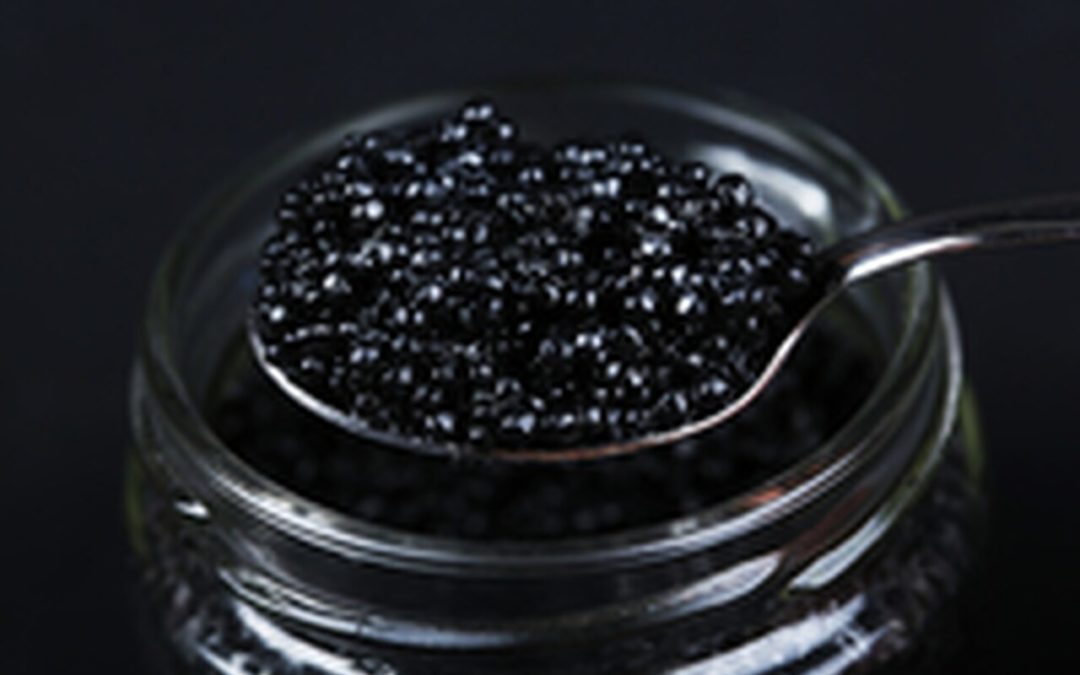
Where Caviar Originated from: The History of Caviar
Learn the Origins of Your Favorite Delicacy: The History of Caviar
Long before Caviar became affiliated with royalty, it was part of the diet in areas where Sturgeon fish was in great abundance. Although accounts of the history of Caviar does not pin a specific date on when the epicurean value of this decadent cuisine began, some records date as far back as pre-historic times.
In essence, caviar is a decadent preparation of the unfertilized eggs or roe of a sturgeon fish. Based on some accounts, caviar is actually the variant of the Persian word “khaya-dar” which means having eggs or egg bearing fish. The Persians who collected the fish eggs for their perceived medicinal value may also have been the first to prepare and appreciate their unique piquancy. However, the tradition of salting roe originated with the Chinese who used this method to preserve Carp eggs.
Ancient classical literature contains several references about caviar. Aristotle who lived during the 4 th Century B.C. spoke so highly of the Sturgeon fish eggs that it became a consummate offering at banquets. Since Sturgeons were found mainly in the Caspian Sea and Black Sea, it was the Russian Tsars that launched its popularity as an opulent epicurean delight. Its status was also significantly heightened towards the end of the 1800s, when the French started importing caviar from Russia, such as Beluga Caviar. In order to preserve the roe for transporting purposes however, the delicate eggs were heavily salted and packed into wooden crates. Despite the fact that these crude processing methods belied the quality of the end product, through consistent demand, Caviar, managed to continue its evolution as a highly sought after and pricey fare. At one point in Britain’s history, Sturgeons were reserved exclusively for the kings and elite of that society and was even knighted as the “Royal Fish”.
Still, at one point in American history, a serving of caviar was sold for a nickel in fine restaurants. Even more unbelievable, this salty delicacy was at times given to saloon patrons to encourage spending on liquor. The proliferation of Sturgeon in the Delaware River eventually spurred the development of a caviar business in 1873 by a German immigrant by the name of Henry Schacht. Soon Schacht began exporting Caviar throughout the world, including to Russia, for a mere dollar a pound. By the end of the 19th century, the United States was producing approximately 90% of the world’s caviar.
Today, this ultimate luxury food is available in a range of prices and varieties. Although the best caviar is a matter of preference, experts say quality is determined by handling and a number of other variables such as maturity of the eggs, texture, color and depth of flavor.
Topping the list of most expensive and well known (yet restricted to sell in the US) is the Beluga Caviar. Although not all Caviar lovers will agree that this is the best of the best, it definitely commands the highest price. Beluga Caviar along with Sevruga and Ossetra are considered to be the most sought after and expensive Caviar. However, overfishing has depleted and endangered the Caspian Sea Sturgeon population, which has made Beluga Caviar illegal to import to the USA. As the Beluga becomes less available, it has created a growing demand for Golden Imperial Ossetra or Kaluga Caviar . Experts say the Kaluga roe is an exquisite substitute that is similar in appearance and flavor to Beluga Caviar. The selection of Kaluga Caviar comes from the Huso Daricus Sturgeon and Amur Sturgeon eggs. Most importantly for many of today’s consumer, it is a sustainable product.
The fall off of supply of Caviar from the Caspian and Black Sea has also expanded interest and the market for other types of fish roe including Hackleback, Royal White Sturgeon , Paddlefish, Bowfin, trout and salmon, amongst others. For instance, the sweet buttery and nutty flavor of the Hackleback Caviar is similar to Caspian Ossetra. As such, as caviar lovers expanded their palate, many consider domestic caviars to be an appealing and affordable alternative to their international counterparts.
